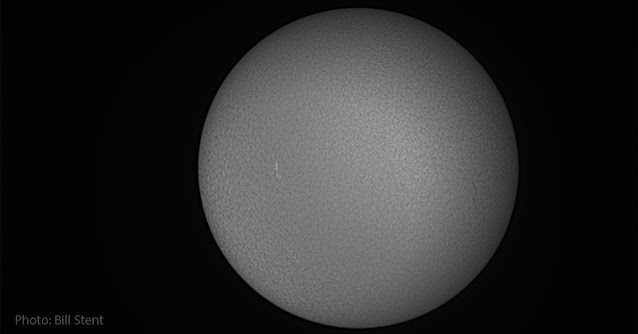A look at the Sun, including the amazing Doppler effect
It's lockdown in Melbourne (still) and I'm looking for something to point a telescope at.
I've sworn off deep sky targets for the time being, as the light pollution in the city here makes anything I produce - even narrowband - look blah in comparison to images taken from the dark sky site.
I've also been taking photos of planets, but I left the Celestron 8 at work. Besides, (and I might be getting a little controversial now) there's a difference between nebulas and planets. Once you've taken a great image of a planet (not that I have yet) it gets a bit repetitive. There's not that many of them (sorry, Pluto).
But wait - there's the sun!
I pulled out my trusty solar telescope, a Coronado PST. This type of solar telescope doesn't work in the same way as a solar film filter. A solar film is an example of a neutral density filter, which turns down all the colours (frequencies) of light to more or less the same extent.
A solar telescope cuts out all frequencies completely, except for a tiny range that corresponds to just the activity I want to see, which is photons produced when an excited Hydrogen atom "relaxes", by spitting out a photon of exactly 656.28 nanometres. Everything else is shut out - and that's a lot of extraneous light.
Next, a monochrome camera is what you want here, as that light that gets through the solar telescope is well into the red. I used a QHY5-III 178M. Because of that filtering, the green- and blue-sensitive pixels on a colour camera wouldn't see anything at all.
I set up my NEQ6 and roughly polar aligned it (I've got three bricks with dimples for the tripod legs, I know which paling on my fence the mount points to, and the altitude hasn't changed from last time). I turned it on and slewed to the Sun.
And here's the photo. Processing this is done in exactly the same way as a Moon image. Briefly, you shoot fast frames in a movie format, sift using PIPP, sift more and stack in AutoStakkert, sharpen in RegiStax, and finish in Photoshop.
Solar photos always look weird. That thing is the Sun? The Sun is pretty much at its quietest at the moment, but there are a few features visible.
First, the whole thing is covered with granulation. The Sun is a roiling mass, and the surface has waves of plasma constantly forming ridges and troughs.
There are two faculae visible. A facula (from the Latin for torch) is a bright bit, with light pouring out from a deep trough in the granulation. I've blown up the half of the Sun that shows these two faculae.
Next, there's a small filament visible. Filaments are coils of plasma arching above the surface of the Sun, created and supported by patterns in its magnetic field.
But the thing I found most interesting in the photo is that one side of the sun is darker than the other. Have a look at the first photo again.
This isn't the poor photography I thought it was.
The Sun is big, and it rotates quickly. This combination means that parts rotating towards us are coming towards us really quickly. Similarly, the parts that are rotating away from us are moving away just as quickly.
This all means that the light from the bits that are coming towards is appear as higher frequency light than the parts rotating away. This is known as the Doppler effect - it works with sound waves as well as light, and it's why police sirens get lower as the police car speeds past you.
A solar telescope filters out all but a very narrow frequency of light (656 nanometres), and frequencies that have been bent up or down by the Doppler effect can fall out of this range, meaning that part of the sun doesn't seem so bright.
That's right, with this type of telescope, not only can you see the Sun, you can also tell which way it's spinning!
Thanks to Dr Russell Cockman of the ASV for explanation of the Doppler effect.


Comments
Post a Comment